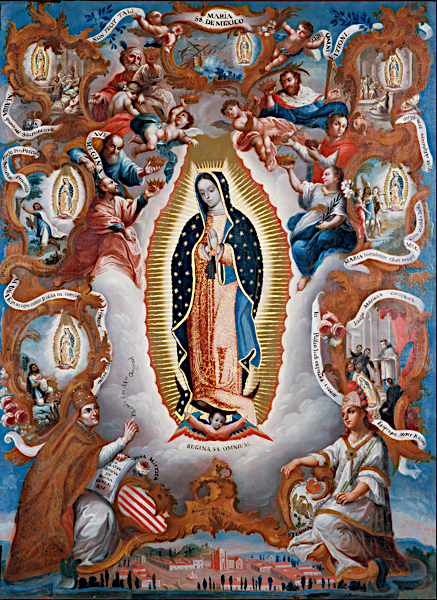
| ||||||||
| Level 100 | ||||||||
|
| ||||||||
| Level 300 | ||||||||
| ||||||||
| Level 400 | ||||||||
|
| ||||||||
| History of Art | ||||||||
| LS&A | ||||||||
| University of Michigan | ||||||||
| Back to the list of courses |
Summer 2017
Undergraduate Seminar: Art and Architecture of Colonial Latin America: Conquest to Independence

NO PRIOR KNOWLEDGE OF ART HISTORY OR LATIN AMERICAN HISTORY IS NECESSARY
After years of violent struggle, Spanish invaders "triumphed" in the New World, and administratively transformed Aztec lands into the Viceroyalty of New Spain and Inca lands into the Viceroyalty of Peru. What role did art play in the colonial project? This course is an introduction to the dynamic and entangled visual culture of colonial Latin America, from the invasion of the Aztec territories in 1519 to the wars of independence in the nineteenth century. Although the period is defined by Spanish domination, colonial art did not simply adopt European prototypes, but rather transformed the imported subjects, styles, and artistic technologies to create a new visual language reflective of the multifaceted society that created it. The course will primarily focus on colonial art from Mexico and Peru, but we will also look at key monuments from the Southern United States and the Caribbean. After a brief introduction to the indigenous traditions at the time of the conquest, we will study a wide array of topics related to colonial visual culture, including: identity formation and depictions of race; transatlantic artists; urban planning and architecture as sites of political contestation; popular religious images; criollismo; religious women; regional art and architecture; and the evolution of colonial Latin America's historiography.
Class meetings will involve a combination of lectures, discussions of assigned readings, and small group activities. Assignments will include exams, papers, and a research project. Course readings will include selections from textbooks, museum catalogues, scholarly texts, and some primary sources translated into English. No prior knowledge of art history or Latin American history is necessary.
Estimated cost of materials: under $50.
HISTART Distribution Categories: E. Latin America, 3. Early Modern.